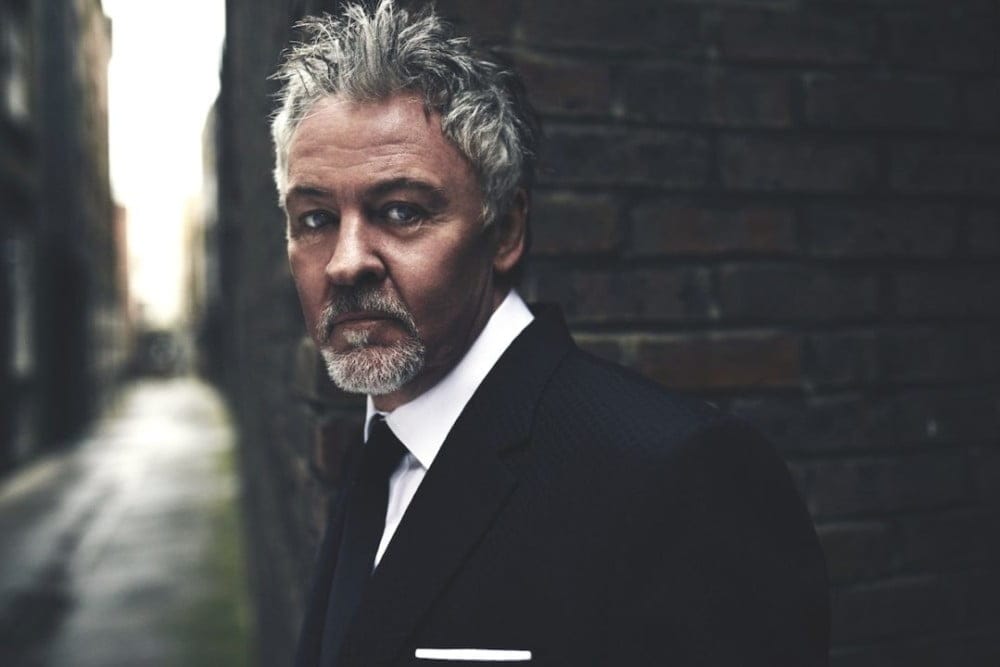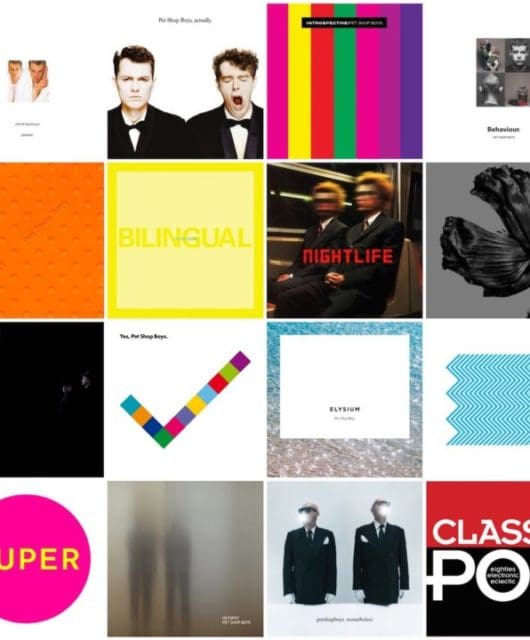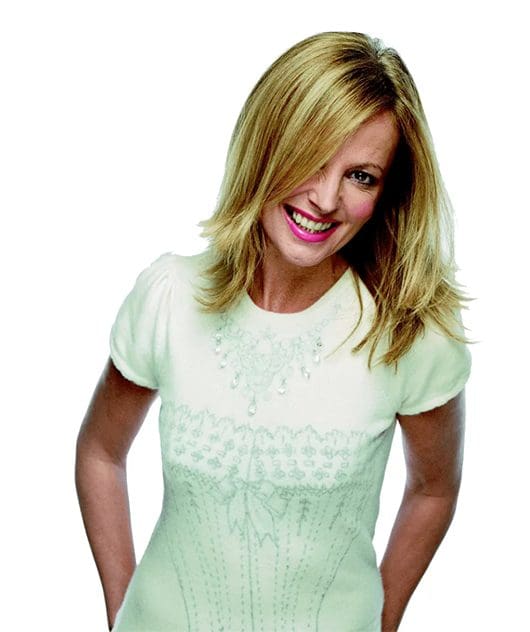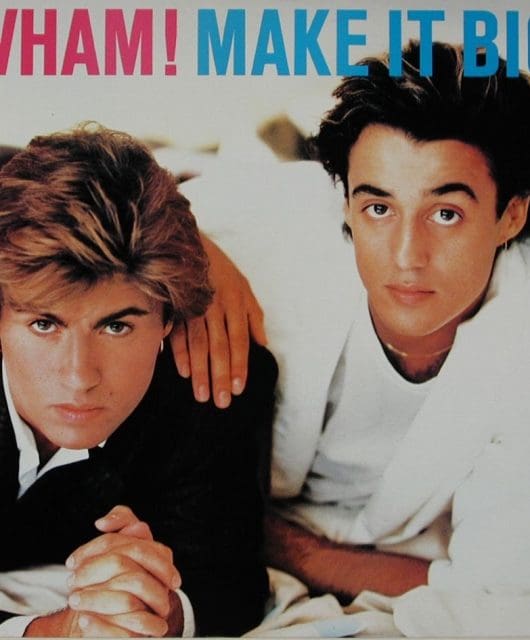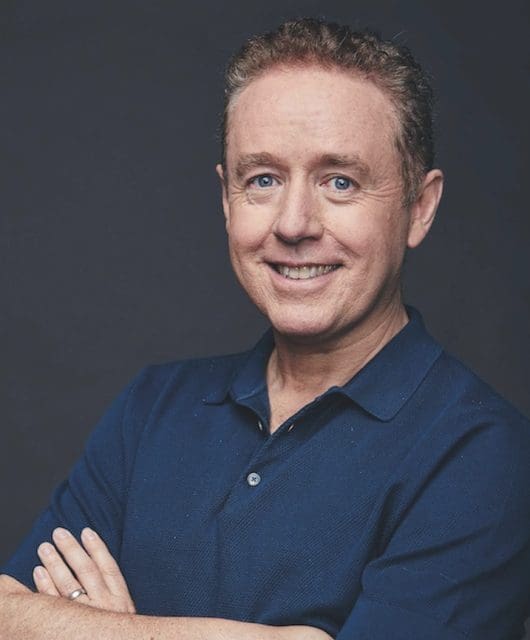Paul Young – No Parlez interview
By John Earls | April 22, 2024
Paul Young talks No Parlez
Paul Young ushered in the sound that dominated the second half of the 80s with the eclectic No Parlez, which spanned soul, New Wave, Bowiesque art-pop and even boasted a controversial Joy Division cover. Now celebrated with a new expanded edition, we hear how the album was created from Paul, producer Laurie Latham, bassist Pino Palladino and backing vocalists The Fabulous Wealthy Tarts.
“When people think of ‘The 80s’, it’s usually categorised as New Romantic, because of bands like Duran Duran and Spandau Ballet becoming so iconic. No Parlez was a more soul-based departure from what was going on at the time. It really stands up, and it was influential. With its backing vocals, the Simmons drums and, yes, my fretless bass, it’s an album with a strong identity. I still can’t think of an album that sounds quite like it. Paul and his music deserve to be remembered more than they are.”
So says bass legend Pino Palladino of Paul Young’s solo debut album. He’s right, too. No Parlez has become such a staple, and the artists like Simply Red, Wet Wet Wet and Go West who followed in Paul’s wake became so huge throughout the rest of the decade, it’s easy to forget just how radical the album’s sumptuously smooth hits Wherever I Lay My Hat (That’s My Home), Love Of The Common People and Come Back And Stay seemed when they landed, while the chart landscape was all about synth-pop and futurism.
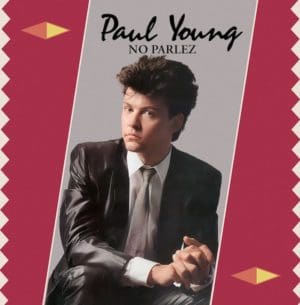
Retro Soul
By the time the album was released in July 1983, Paul was finally a star. No Parlez promptly sold two million in Britain, second only to Thriller as the year’s best-selling LP. But the idea of someone regarded as a jobbing retro soul turn becoming massive was a mighty gamble when Sony imprint CBS offered Paul a solo deal away from his band, Stax-influenced brass botherers Q-Tips.
“Being offered a solo deal came as a surprise,” admits Young. “We wanted a new deal for Q-Tips, I wasn’t looking to go solo. But what I ended up with was a solo offer on the table. What I had in my favour was a pocketful of ideas and a confidence in my ability. Q-Tips had played up and down the country for years, so I knew I could hold a stage. And I’d listened to lots of different music, which you can hear in the album’s diversity.
“Coming out of a vintage band like Q-Tips, I thought it was time to embrace technology. All the changes going on in music were there in No Parlez, but I wanted real instruments, too. That mix has helped the album stand the test of time, because I thought synths were just another instrument to use.”
Standing The Test Of Time
CBS were initially unconvinced, as Paul remembers: “CBS wanted me to do a soul album. I said I didn’t want that, that there wasn’t going to be a brass section. CBS said: ‘Well, what do you want? Make some demos to show us what you think the album should be.’”
Although it’s dominated by covers, demos of No Parlez’s three original songs – Tender Trap, Broken Man and Behind Your Smile – were key in convincing CBS their new signing could pull off a pop-soul hybrid. They were co-written with keyboardist Ian ‘Rev’ Kewley, the only Q-Tip to remain in Paul’s solo band.
“We’d written Broken Man while trying to move Q-Tips away from being so retro,” Young explains. “Ian and I felt Q-Tips were being left behind once the Mod movement started to dissipate, that we needed something more contemporary. The others in the band weren’t so keen.”
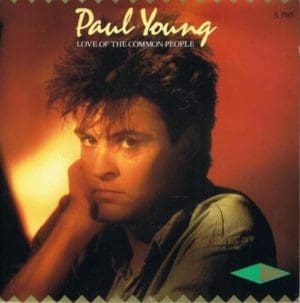
Restless Spirit
Behind Your Smile was eventually relegated to the album’s CD bonus track and neither of the other original songs became singles, but CBS could see what Paul was trying to achieve. “I’d only just started writing with Ian at the end of Q-Tips,” reasons Paul. “As a songwriter, I was restless. When I was younger, I couldn’t settle. I’d start writing a song in the morning but, by mid-afternoon, I’d be bored out of my brain. I found it hard to concentrate. I don’t think Ian was a natural songwriter either. Looking back, I should have diversified and written with other people as well as Ian.”
Kewley, who died in 2020, may have been a hesitant songwriter, but he flourished as Young’s bandleader. Everyone Classic Pop talks to is passionate about Ian’s role in letting their musical voice be heard on No Parlez. Palladino raves: “It was a very collaborative album. Paul was very encouraging, and the Rev’s arrangements left a lot of space for me to able to play as I’d hoped.”
It helped that Paul and Ian gathered such a strong band, dubbed The Royal Family, for the album. Paul jokes: “They assembled like The Avengers,” and there was a sense of fate in accumulating such great sessioners.
Avengers Assemble
Drummer Mark Pinder and synth player Matt Irving had worked with Kewley in previous sessions. Pinder knew guitarist Steve Bolton. Then came backing vocalists The Fabulous Wealthy Tarts – Kim Lesley and Maz Roberts – who’d sung with Q-Tips. It’s impossible to hear Come Back And Stay or Love Of The Common People and imagine them without Maz and Kim’s contribution.
The pair had worked together for several years, initially in Soho nitespot The Celebrity Club, then as backing singers for Panties, a London rock & roll revue band. Maz recalls: “We did five gigs a week in the West End, running from place to place with costumes under our arms and getting changed in the ladies’ toilets. We’d play to a few hostesses and a load of businessmen, who were off their trolley.”
Their break – and their name – arrived when Jools Holland’s tour manager saw Panties, on the eve of Holland’s first solo tour since leaving Squeeze. He needed two female backing singers. Lesley laughs: “Everything with Jools was hilarious. Jools said he’d make something up on the spot for our name.
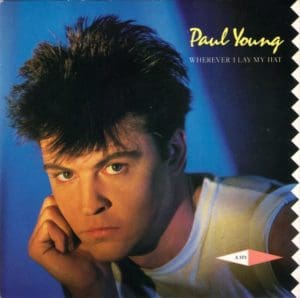
Absolutely Fabulous
“We told him: ‘That’s fine, just don’t call us tarts or slags.’ At that first gig, he left a pause between each word: ‘Please welcome… The Fabulous… Wealthy… Tarts!’ Maz and I muttered: ‘You bastard!’ as we went on. It just made us chuckle, really.”
Maz adds: “Paul was a gentleman and referred to us as ‘The FWTs’ in interviews and in the album’s credits. But everyone still knows us as The Fabulous Wealthy Tarts.” They first met Young on the same tour, as Maz reveals: “Kim and I were in our dressing room when we heard a load of shouting outside. We opened the window – it was Paul and his then-girlfriend, asking if they could come in to see the gig. We got them in, and Paul asked us to sing with Q-Tips, too.”
The camaraderie continued when drummer Mark recommended Laurie Latham as producer. The two had worked together in cult indie band The Vampire Bats From Lewisham. Latham was best known as the producer of Ian Dury And The Blockheads, as Paul notes: “Laurie and Rev came at music from such a different angle, but that’s what made the album work. They brought out the best in each other. Laurie had a leftfield, indie sensibility, which was great for an angular guitar player like Steve.”
Iron Out The Rough Spots
Although Laurie was aware that Blockheads guitarist Chaz Jankel had produced Toast, the 1978 novelty hit by Paul’s first group Streetband, the producer hadn’t kept up with his new client’s subsequent career. “I didn’t know an awful lot about Paul’s past,” Laurie confesses. “I was determined to do something different from Q-Tips’ soul revue style, which chimed with what Paul wanted. Paul is quite shy, so it took a while to get to know him. Then, when he started singing, it was incredible. There were elements of Bobby Womack in his voice, with the falsetto of Marvin Gaye. I couldn’t believe it. Also, Paul let me get on with it, which was ideal.”
Although happy to let people do their jobs, Young’s vision for a new type of pop album was in place from the start. “Putting all these great players together could have been a recipe for failure,” he says. “They needed to have a common aim, and I wanted to get a pop sensibility through them. Having been in the game for so long, I was ready.”
A fan of Tom Tom Club, Paul’s first idea was to try Don Covay’s R&B groove Iron Out The Rough Spots updated in the style of the Talking Heads spin-off. It didn’t chart, and is so obscure it doesn’t even have a Wikipedia entry. “I was really proud of that song,” sighs Paul. “I was so sad it didn’t fly. The video treatment for it was great – a cartoon stage set of a 1950s kitchen, with giant household implements like Hoovers sticking out of the floor and walls. I’d dance my way around those while singing. It sounded amazing, but CBS then wouldn’t put up the money. Honestly, if we’d made the video, I think it would have broken that single.”
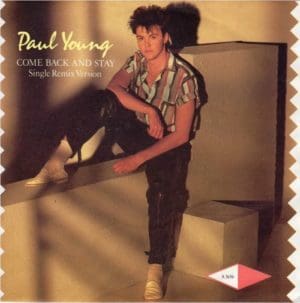
Common Cause
Next, Young recorded Love Of The Common People after hearing Nicky Thomas’ reggae version on the radio: “I thought: ‘It’s got four chords and great lyrics. What better can a singer ask for than a simple chord pattern and great words?’” CBS were concerned it didn’t showcase Paul’s voice. A frustrated Young responded: “Does every song have to show my voice off? It doesn’t have to be a great vocal performance, isn’t it more important that it’s a great song?”
Initially, CBS seemed to be right: Love Of The Common People also failed to reach the Top 100. How did Paul feel after his first two singles flopped? “I was recklessly confident back then,” he laughs. “My view was: ‘If they don’t get it, that’s not my fault.’ I just cracked on with making the rest of the album.”
Latham was more concerned: “I always remember hearing Dave Lee Travis saying after playing Iron Out The Rough Spots on Radio 1: ‘That’s such a clever record,’ and then it just didn’t go anywhere. I probably wasn’t too sure whether we’d progress after those first couple of singles. We used to moan about the label at the time but, looking back, they were very supportive and enthusiastic. I always thought Paul deserved to do well, I just hoped the record we were working on would do something.”
Fret Not
The true genesis of No Parlez arrived when Marvin Gaye’s obscure 1969 B-side Wherever I Lay My Hat (That’s My Home) randomly popped into Young’s head one day. “I hadn’t heard it for about 10 years,” shrugs Paul. “That was typical of No Parlez. All these very different songs had soaked into my head and started to drip out at opportune moments.”
Maz’s boyfriend had already volunteered himself for bass duties on the album. Pino Palladino had met her while playing bass on that Jools Holland tour, having moved from Cardiff in 1981 to try to become a session bassist. He’d seen Q-Tips at Cardiff club Casablanca, thinking: “That singer is really good.”
After buying his trademark fretless bass at a music store in New York, Pino first played it on Gary Numan’s 1982 album I, Assassin, but Paul’s soulful pop would prove a more natural fit. “The timing was perfect,” enthuses Palladino. “I felt so ready to take on a challenge and show what I could do. There wasn’t much of a thought process from me, I was simply: ‘Get in there and get all your ideas out.’ I didn’t want to leave the room until I’d got all my ideas onto Paul’s songs.”
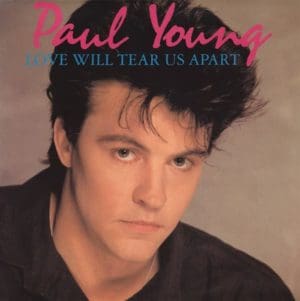
Hats Off
That first session of Wherever I Lay My Hat (That’s My Home) proved so fruitful that Paul reworked the arrangement to suit Pino’s playing. “Pino started playing and I was immediately: ‘Woah! Oh my God!’,” chuckles Paul. “I’d thought we were just trying Pino out, but what he played was just so good. Pino’s languid style meant Mark’s drums needed to be more intricate, building it all up from what had started as a simple Phil Spector sound.”
Although Pino was the album’s final key ingredient, Wherever I Lay My Hat (That’s My Home) was Paul’s first single solely with his name, rather than as Paul Young And The Family. “I’m not a natural solo artist,” insists Young. “I wasn’t ready to go completely solo. I was hiding the fact I was suddenly a solo artist by having Paul Young And… after me on the sleeve, until I could get comfortable with the idea that my music was now: ‘This is me, I’m solo.’”
Entering the UK singles chart at No.84, single three looked like it might go the same way as the first two. Sustained radio play helped, as did an unprecedented two successive appearances on The Tube, co-hosted by The Fabulous Wealthy Tarts’ former boss, Jools Holland.
Overnight Success
“Because we knew Jools so well, being on The Tube felt completely natural,” breezes Maz. “The producers, Geoff Wonfor and his wife Andrea, loved us. They were: ‘Wow, that was brilliant! Can you come back next week?’ And suddenly it went nuts from there.”
On the eve of No Parlez’s release, Paul had a No.1 single for three weeks. “When success happens, it happens really quickly,” ponders Maz. “People thought Paul was an overnight success, but Paul and everyone involved had been slugging around for a few years.”
“I was excited once it looked like I’d finally have a No.1, but Ian Kewley was in shock,” reasons Young. “Ian was a few years older than me. It was strange and lovely for me to suddenly have acceptance, but it was so much more important for Ian. He told me: ‘I can finally support my family.’ I didn’t have kids, I wasn’t even going steady. It’s easy to forget pressures like Ian had.”
Royal Welcome
No Parlez being in the can meant Paul already had a classic ready to roll to capitalise on his overdue new success. Its three hits occupy roughly the same pop/soul terrain, making it simple to overlook just what a rewardingly rich and diverse experience No Parlez is overall. Steve Bolton, compared by Paul to David Bowie’s guitarists Adrian Belew and Earl Slick, wrote the wild Ku Ku Kurama, while Anthony Moore of prog rockers Henry Cow penned the even more adventurous sprawling title track. As Paul puts it: “There’s a streak in me that hates being categorised. Those two songs are what help give the album its longevity. Listeners probably skipped over those tracks at first. Then, once they got bored of the singles, there were these other interesting songs to discover. We were out to show we could create great music beyond pop singles.”
That experimentation allowed further freedom for The Royal Family to show their craft. “Being part of such a great band was a big element of No Parlez,” affirms Pino. “I’m not saying we were in their league for historical importance, but that early incarnation of Paul had an edge of Sly And The Family Stone to it. It was funky, rocking and so exciting.”
“There were no bad vibes in that studio, none,” agrees Laurie. “There were so many talented people in the studio and they all gelled. Rev had incredible arrangements and hook ideas, while Paul’s wonderful voice held it all together. It’s an album where it all worked.”
Vocal Acrobatics
Lesley admits: “I didn’t expect it to do so well, because it felt too good to be true. The attitude throughout was: ‘Let’s just do what we want to do and let the record company foot the bill.’ We thought we were making an incredibly eclectic record, and we were. It made for something new and different, something that caught the ears of the country. That band was a love-in – so much so that Maz and Pino ended up with three kids!”
Married to Pino since 1992, Maz was delighted she and Kim were at the forefront of an album that starts with their joyous interplay on Come Back And Stay. “When we met, we discovered that we were both obsessed by The Everly Brothers,” she remembers.
“Our voices blended together well, and we then tried to emulate our harmonies being as good as the Everlys’. Kim has the higher voice and does the vocal acrobatics, while I do the more talking-sounding vocals.
“We were encouraged to think outside the box on No Parlez, doing silly things most singers would never let backing vocalists do. Nothing was too weird in those sessions, it was brilliant.” Young considers: “Maz and Kim are so important to the album. They’d done fairly standard parts with Jools, and I knew they could do a lot more. They were such a find.”
Love/Hate
Once No Parlez went to No.1, a backlash was inevitable, most noticeably from Joy Division fans outraged at a cover of Love Will Tear Us Apart. “I could hear The Four Tops sing it,” explains Laurie, who had suggested it for Paul to tackle. “Doing it in the style of The Four Tops was the starting point, but it moved away from that, especially once Steve’s mad guitar came in.”
“I could see that Ian Curtis was sacred to Joy Division fans,” accepts Paul. “I wasn’t surprised my version was so controversial. I’ve since met Peter Hook, who said: ‘Thank you for covering our song,’ and the turning point was when John Peel played it. He said: ‘I’m a Joy Division fan, and I think that’s a worthwhile interpretation.’ I think fans should be pleased to hear a different version of a favourite song, but I’m guilty of hating covers, too. I’m a big Free fan and I wasn’t best pleased when Pepsi And Shirlie did All Right Now.”
Young’s fame meant he was suddenly a pin-up, too, exploited in some of the later heartthrob single sleeves. “I’m glad I don’t have an addictive personality,” reflects Paul. “I like a drink, but I knew when to stop. My manager had worked with me since Streetband, so there was a lot of mickey-taking going on. I wasn’t allowed to get too big for my boots, but I’m quite a mellow personality anyway.”
Teen Idol
There were far worse singers to scream at, as Kim points out: “Paul was a beautiful-looking man who sang his arse off and danced like a dream. He was a talented guy, and a good guy to boot. We were all OK with girls worshipping him.”
The tour saw offers start to flood in for Palladino, whose imperious playing has since featured on artists from The Who to Miley Cyrus. He says: “No Parlez was massive for me, because the bass was such a feature. I got calls from David Gilmour and Elton John. The band took the piss on tour, going: ‘Fucking hell, who are you playing for today?’”
Latham went on to work with Squeeze, Echo And The Bunnymen and The Christians, confirming: “I got offered so much work that I had to turn down some lucrative offers. In the States, No Parlez was more of a cult album than it is in Britain. I met Tina Turner, who told me it was on heavy rotation on her tourbus, but I turned down what became Private Dancer.”
Young Love
No Parlez stayed in the UK Top 100 for 119 weeks, a word-of-mouth phenomenon that allowed Paul to take his time over his next album, The Secret Of Association. “The record company couldn’t believe it,” grins Young. “The success gave me time. I was a singer first and foremost, and my strong point was how I interpreted other people’s songs. It doesn’t matter to me if they’re mine or someone else’s. We laid ourselves open to publishers and said: ‘See if your songs are good enough.’ It meant we got sent piles of crap, of course, but it meant we found some good obscurities, too.”
The new expanded edition is chance to rediscover how No Parlez is one of the defining albums of pop’s greatest decade. As Laurie Latham summarises: “Paul is quite often excluded when people talk about 80s music. He always seems left out of those tribute programmes to the decade. That’s not fair, but I understand it: you couldn’t pigeonhole No Parlez then and you can’t now. The 80s sound is defined. No Parlez is just too eclectic for that.”
Visit Paul Young’s official website here
Read More: Here Classic Pop tells the story of 1983 in music


